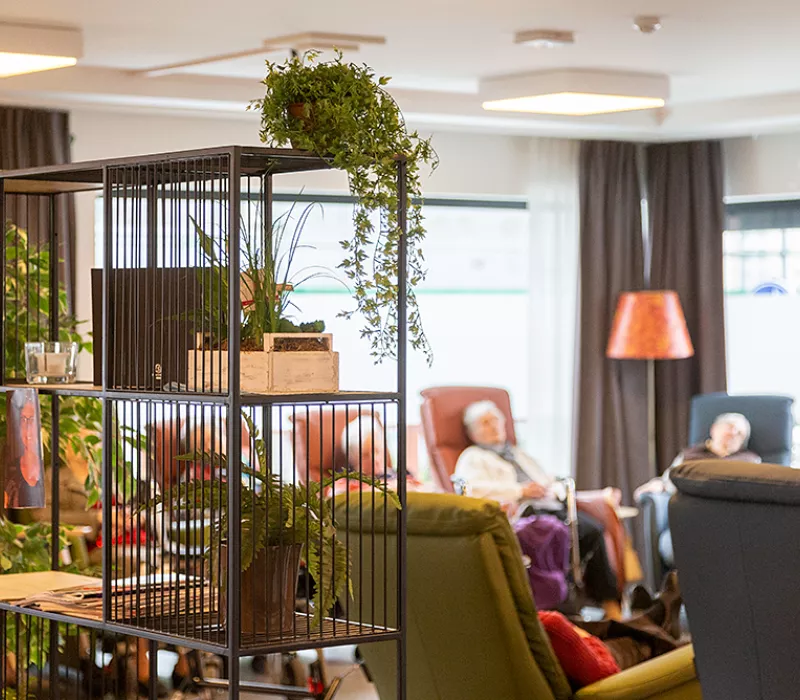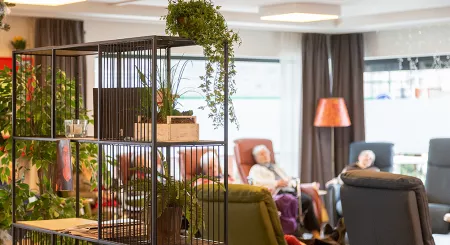We use our senses to gather and respond to information about our environment. As humans, our environment inspires, motivates and influences us in many different ways. Studying the impact of the built and natural environment on man is the domain of environmental psychology, a fascinating discipline that we’d like to talk about in today’s blog.
Environmental psychology is a relatively new field of study. Emerging in the sixties, this branch of psychology studies people’s perception of their environment. As is the case with other psychological disciplines, its findings are not black and white. That’s because our perception of the world is a highly personal experience, involving all our senses. It’s no different in care institutions. Nonetheless, there are lots of things we can think about doing.
Use of greenery
A walk in nature can be energising or calming and, as such, has tremendous healing power. Research has shown that patients recovering from surgery in a room with a view of greenery used less pain medication and were discharged sooner than patients whose view consisted of a brick wall. You can incorporate nature into your care institution by installing outdoor gyms, planting sensory gardens, green roofs or rooftop gardens or even by using photo wallpaper murals or video screens showing images of nature.
A combination of elements
The end result requires all your senses to work together. No matter the time of the day, we experience the world around us through our senses. A care institution is no different. Imagine your nursing home is situated in a nature area, but you fail to draw in enough natural light and don’t make the most of the green surroundings. Obviously, then, your environment will have little effect. Likewise, if you opt for cold metal furniture rather than investing in warm wood and high-quality fabrics, the experience will be completely different.
Colours and spaces
That said, you’ll need more than suitable, high-quality furniture to create optimum alignment of sense and perception and promote residents’ well-being or healing process. When designing a care institution all these aspects need to be incorporated from the word go. The elderly need their world to be tangible, and as familiar as possible: furniture with a nostalgic look and feel will help to create a homely atmosphere. The use of colour and the layout of spaces are equally important.
More than just furniture
High-quality, ergonomic care furniture, such as the designs from Moments Furniture, will only work when that same level of quality is extended throughout the entire interior. There’s more to Creating Hospitality than putting the right chair in the right place; this process is in fact preceded by extensive study, courtesy of our M-Academy experts.
Studio M, the Moments Furniture interior design studio, specialises in the integrated interior design of care institutions. Working with several preferred partners, and using sensory perception as a starting point, we mix and match furniture, colours, layouts, nature, light and scents. Everything revolves around familiarity, or a combination of all these elements, taking residents’ needs into account. With Studio M, Moments Furniture hopes to contribute towards creating a stimulating and motivating health care environment.

